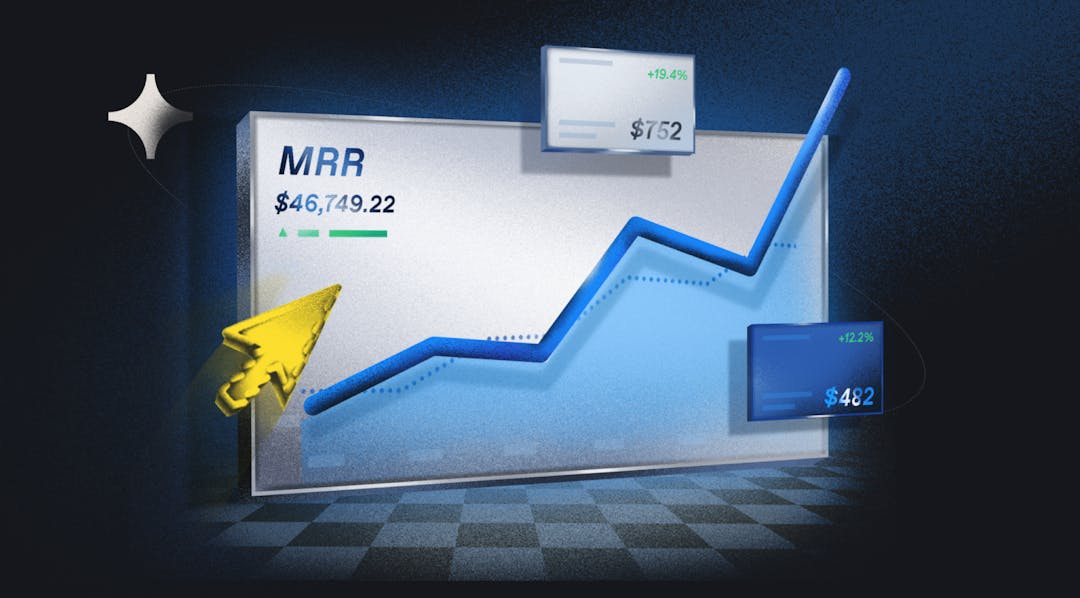Learn all about the quote-to-cash process, the steps involved, how to overcome common challenges, and streamline the Q2C process to boost sales success.
A lot of customer-centered activity takes place in the quote-to-cash process. Most of the activities span various departments, and traditionally they have been siloed. But operating your business in such a manner leads to many inefficiencies, which could cost you significantly in the current competitive business world. Integrating and streamlining your quote-to-cash (Q2C) process is no longer an option but a necessity if you want to survive.
But first, what is the quote-to-cash process?

What is quote-to-cash?
Quote-to-cash (Q2C) is a term that describes the end-to-end business processes related to the sales lifecycle. The process spans from the moment you present an offer to a prospect to the time revenue is collected, allocated, and recorded. Organizations use the data to improve subsequent sales cycles.
8 quote-to-cash steps
These eight steps form the Q2C process. Streamlining and integrating the process ensures improved efficiency, which is good for your company's bottom line.
1. Offer configuration
Configuration is truly the first step in the Q2C process. In this step, the salesperson comes up with a quote for the prospect using the already recorded information. It is essential to make it as quick as possible while also ensuring that it's error-free.
2. Pricing
Pricing is critical to the customer relationship, and hence your sales team needs to be accurate and timely. Sometimes, pricing can involve multiple layers, such as promotions, discounts, and add-ons. Or it can be straightforward. But, regardless, your team needs to be very fast as research shows the sale goes to whoever responds the fastest.
3. Quote creation
Once they determine the optimum price, the sales department creates and presents a detailed quote to the prospect. The quote should contain all the information necessary to complete the sale.
4. Contract management
After the customer is satisfied with the quote and accepts it, a formal proposal and contract are crafted. A well-thought-out and error-free contract could be the difference between signing a new prospect immediately or having to wait.
5. Order management and fulfillment
Automated order management and fulfillment systems ensure you only accept orders your organization can fulfill. Automation also ensures completed proposals and contracts trigger billing and other finance-related activities.
6. Billing and invoicing
The account receivables department takes over once the quote is completed. They promptly prepare and send a detailed invoice to minimize delays in payments that could lead to cash flow problems for the company. If the process is automated, they don't need to understand sales intricacies as they will be receiving the necessary information in real-time.
7. Revenue recognition
Accurate revenue recognition is crucial for a company's financial reporting integrity. Those who deal with recurring revenue need to adhere closely to this principle to show precise profit and loss. It also helps with financial forecasting and revenue projections.
8. Renewal
The customer can decide to renew the contract and purchase the same products at this stage. But it is also an opportunity for the company to cross-sell or upsell the customer. It is easy for the sales department to maximize the lifetime value of each customer using the data already in the system.
Most common Q2C challenges
Many businesses struggle to streamline their quote-to-cash process, leading to many challenges. This negatively affects the bottom line due to missed opportunities, delays in payments, and poor customer experience. The following are some of the most common challenges.
Inability to create competitive quotes
Not all of your sales quotes will become purchases. Hence, if your salespeople, for any reason, cannot come up with a competitive error-free quote, you may end up with few business prospects. Having the right pricing strategy and automated process helps your teams create a well-thought-out competitive quote.
Inaccurate invoices
When the accounting department personnel have to understand every sale detail before they commence the billing process, it may lead to delays in receiving payments which negatively affect the organization's cash flow. When invoices are inaccurate, customers return them, and the sales department checks the process to identify the problem.
Delayed payments
Many human errors occur if a company's Q2C process is not streamlined and integrated. For example, when invoices are sent late or full of inaccuracies, the customers have to return them for corrections, which may take time. Also, the accounting department has to keenly go through the invoice while comparing it to the available records to identify the error.
Inaccurate revenue recognition
When an organization handles all its revenue recognition manually, it can be a tedious affair riddled with errors. You end up declaring the wrong profit and loss, and all your revenue projections are also affected.
Dissatisfied customers
Maintaining a good customer relationship is essential in the competitive business world. If your business is not providing a good customer experience, you end up with disgruntled customers. It's not suitable for business as it may influence other prospects negatively against your company.
Missed cross-sell and upsell opportunities
Poor customer experience and long sales cycles lead to missed cross-sell and upsell opportunities due to inefficiencies. As a result, your bottom line is highly affected, and unless you streamline your business processes and integrate for a more efficient operation, the cycle will continue indefinitely.
What are the benefits of a streamlined Q2C process?
Streamlining the quote-to-cash process is beneficial for any business. You'll overcome most of the challenges listed above and ease employees' work. Some of these benefits include:
Improve sales systems
Automating quote-to-cash processes reduces the silos that exist in different departments. As a result, there is improved communication between them, resulting in a more efficient operation. The automation also reduces the sales cycle, which leads to more revenue gain through a better customer experience.
Identify sales opportunities
Sales reps make more detailed quotes thanks to data availability. They can easily identify opportunities for upselling and cross-selling.
Minimize quoting errors
When quote-to-cash processes are automated, human errors significantly decrease. As a result, you have a better chance to convert more prospects into paying customers. In addition, you avoid a lot of embarrassments and revisions.
Reduce order and invoicing errors
As with the quoting errors, order and invoicing errors are also reduced as the personnel no longer have to rely on manual data input. Departments share real-time data, and one department's actions trigger another into action. For example, when an order is fulfilled, it triggers an invoice to be prepared and sent by the account receivable.
Increase customer retention
Do you want to improve your customer retention rate? The number one way of ensuring you retain the business from your current customers is by providing a good customer experience. To do this, you can start by reducing your sales cycle. Also, ensure accurate and on-time communications. Streamlining and automating your business processes improves your business customer experience.
Boost revenue
Streamlining and integrating helps you seize all available cross-sell and upsell opportunities early. If your sales team successfully signs the customers, your organization receives a significant revenue boost with minimal effort and cost.
Improve your quote-to-cash process with the right set of tools
As you can tell, automation is vital in improving the quote-to-cash process. To optimize your success and maximize your sales, you need to employ the right software to help your business integrate all the processes. Some of the software you need include:
CRM software
Customer relationship management (CRM) software is crucial in managing customer information and past sales. It comes in handy when you are billing and signing contracts.
ERP software
Enterprise resource planning (ERP) is crucial in inventory management. Internal inventory is vital in ensuring the quote to cash process is uninterrupted. ERP helps track available materials and what needs to be sourced outside or manufactured when a BOM is generated.
CPQ software
Traditionally, when a custom design product needed to be made, there was a lot of back and forth between various departments. But with the configure price quote (CPQ) software, the need for manual operations is eliminated. Everything is automated, from when a customer or salesperson enters the product specifications into the system, to pricing and quoting.
Revenue recognition software
The best revenue recognition software accurately recognizes revenue regardless of the type. It's time consuming and riddled with human errors when the process is manual. ProfitWell Recognized ensures you no longer make mistakes in your profit and loss reporting.
Pricing software
A pricing strategy is crucial for the growth of your business. The same old pricing techniques are no longer cut in today's business world, which is why you need pricing software driven by data to ensure optimum growth for the least cost. Price Intelligently offers science-backed pricing to help you achieve business growth projections and more.
Quote-to-cash FAQs
What are the 3 layers of quote-to-cash?
The three layers of QTC are CPQ, contract management, and revenue management. These layers cover all the processes involved in the quote-to-cash process.
What is SAP quote-to-cash?
Quote to cash covers all the business processes, from preparing a quote-to-payment of revenue for the product.
What is the difference between quote-to cash vs order-to cash?
The order-to-cash process involves everything from when a customer places an order to receiving payment. Quote-to-cash encompasses order-to-cash processes and configure, price, quote, and contract management.
What is the difference between quote to cash vs CPQ?
CPQ software helps companies generate competitive quotes for prospects, while QTC goes beyond quotes into contract and revenue management.



